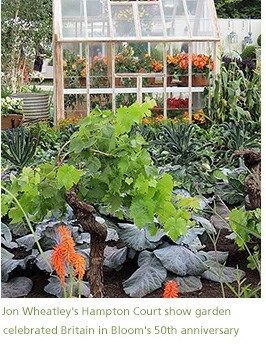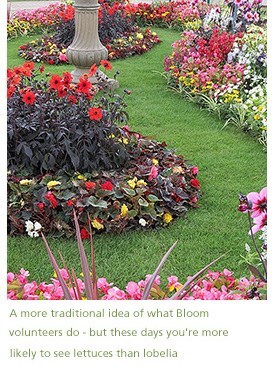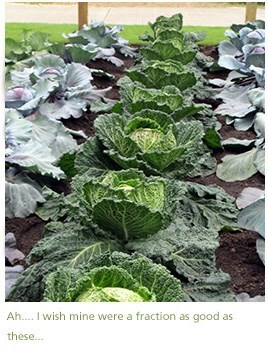Planting in the community
 Come October, the Britain in Bloom finalists across the country are biting their nails to the quick waiting to hear the results of another year’s hard work on the nation’s roundabouts and road verges.
Come October, the Britain in Bloom finalists across the country are biting their nails to the quick waiting to hear the results of another year’s hard work on the nation’s roundabouts and road verges.
So, you are no doubt asking, what?
The trouble is, Bloom has a bit of an image problem. I bet you’re already thinking blue rinsed, doughty ladies armed with trowels and busy lizzies. Hanging baskets and box topiary cut into the name of the town in question. Lots of committees, the WI, cups of tea and a bit of sponge cake for the volunteers. Chaps with clipboards having a jolly around the country lanes all summer. It’s all very nice, and reassuring in a Thora Hird sort of way, but it seems to take place without any particular reference to the rest of us at all.
And yet.About seven or eight years ago, Bloom quietly gave birth to a smaller, more subversive offspring. It’s Your Neighbourhood, also run by the RHS, is for communities who don’t want to compete with the worthy folk from Town Hall. The idea is that a group comes up with a project, any project, to green their local environment.
The volunteers are a much more mixed group of ages – a cross-section of any group of neighbours, in fact, including older people and younger. The types of projects – reclaiming disused, abandoned or neglected spots of land – make them more alternative, often more urban, always more socially extraordinary.
 There are now nearly 2000 entries every year: IYN groups have created wildflower meadows out of a scrappy bit of land next to a carpark in Dundee. They’ve made an allotment-style shared garden with nine raised beds full of veg out of a disused play area in central Norwich, and planted a community orchard at the edge of a Manchester rugby field.
There are now nearly 2000 entries every year: IYN groups have created wildflower meadows out of a scrappy bit of land next to a carpark in Dundee. They’ve made an allotment-style shared garden with nine raised beds full of veg out of a disused play area in central Norwich, and planted a community orchard at the edge of a Manchester rugby field.
You’ll see from the above that there’s a strong grow-your-own thread running through the IYN initiatives. Last year Britain in Bloom had an edible theme, too. When you ask a group of people to garden on a bit of land, it seems the first thing they want to do is grow food.
IYN is marked – you get graded, and can work your way up the grades as your project gets more established. But, crucially, it’s not primarily competitive: the ethos behind it is encouragement, advice and guidance.
And I think it’s not too much of a stretch of the imagination to draw a straight line between Britain in Bloom via initiatives like IYN to places like Totnes, in Devon, and Todmorden in West Yorkshire where they grow herbs in planters on the railway stations for commuters to pick on their way home, and co-opt the front yard of the local police station for raised beds full of beans and kale.
 My guess is that the last thing those who organise such movements would want to be associated with is something as establishment as Britain in Bloom. After all, this is cutting-edge gardening for the 21st century: guerrilla groups getting out there, thinking a little differently about how we do things, rejecting the big-business global agriculture models in favour of food-inches localism and turning their immediate environment into an inspirational place full of fresh food that’s free, as it should be, for anyone who wants it.
My guess is that the last thing those who organise such movements would want to be associated with is something as establishment as Britain in Bloom. After all, this is cutting-edge gardening for the 21st century: guerrilla groups getting out there, thinking a little differently about how we do things, rejecting the big-business global agriculture models in favour of food-inches localism and turning their immediate environment into an inspirational place full of fresh food that’s free, as it should be, for anyone who wants it.
But in fact, they owe far more to their blue-rinsed forebears than they care to admit.It’s extraordinary how people respond.
IYN is getting kids to talk to grannies across the chainlink fences, breaking down barriers of mistrust and misunderstanding.
Todmorden was a little place nobody had heard of before it became Incredibly Edible. Now everyone wants to go there, and it’s inspired copycat community food-growing projects all over the world, which can only be a good thing. Ditto Totnes.
And there’s a community benefit too: when you live in the kind of area where you’re used to picking your way through broken glass and needles on the way to school, it’s surely nothing but good when your path leads past a ‘secret’ strawberry garden, a line of herb planters your kids can pick from or a field full of fruit trees instead.
And it may be unfashionable, but I’d like to thank Britain in Bloom, doughty ladies and all, for planting the seed of an idea in the minds of people of all ages and backgrounds who wanted to do something about an environment they could see needed a bit of cheering up.
Those involved with Bloom have been quietly and diligently community gardening for the last 50 years, and they’ve taken a lot of stick for it. But in fact, you could argue they’ve been ahead of their time for decades.



 Come October, the Britain in Bloom finalists across the country are biting their nails to the quick waiting to hear the results of another year’s hard work on the nation’s roundabouts and road verges.
Come October, the Britain in Bloom finalists across the country are biting their nails to the quick waiting to hear the results of another year’s hard work on the nation’s roundabouts and road verges. There are now nearly 2000 entries every year: IYN groups have created
There are now nearly 2000 entries every year: IYN groups have created  My guess is that the last thing those who organise such movements would want to be associated with is something as establishment as Britain in Bloom. After all, this is cutting-edge gardening for the 21st century: guerrilla groups getting out there, thinking a little differently about how we do things, rejecting the big-business global agriculture models in favour of food-inches localism and turning their immediate environment into an inspirational place full of fresh food that’s free, as it should be, for anyone who wants it.
My guess is that the last thing those who organise such movements would want to be associated with is something as establishment as Britain in Bloom. After all, this is cutting-edge gardening for the 21st century: guerrilla groups getting out there, thinking a little differently about how we do things, rejecting the big-business global agriculture models in favour of food-inches localism and turning their immediate environment into an inspirational place full of fresh food that’s free, as it should be, for anyone who wants it.